
The People Behind Standards
ASTM International’s greatest resource is its membership. Our members work with other professionals all over the world, forging lasting friendships and connections and gaining knowledge and expertise, all while helping the world work better, one standard at a time. Here are stories of six members from across the many industries that ASTM represents.
The Founding Standard
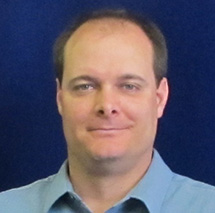
Joseph Kristan
“The relevance and importance of standards such as the specification for carbon steel tee rails (A01), one of ASTM’s first steel standards, has not diminished over the years,” says Joseph Kristan. “Standards are living documents that require care and vigilance to ensure they provide value, assure quality, and remain relevant into the future.” Kristan serves as chair of the steel rails and accessories subcommittee (A01.01), in ASTM International’s committee on steel, stainless steel, and related alloys (A01).
Kristan is the director of product technology at EVRAZ, a producer of rail in North America, which is what first connected him with ASTM. “Standards are very important as they set minimum requirements for the form and function of a product to ensure it will reliably perform as designed,” says Kristan. “Without the availability and utilization of standards, there would be significant variation in performance and likely much less emphasis placed on process improvement and quality without a bar by which to be reliably measured.” He looks forward to continuing to work with other rail and rail accessory producers, as well as with customers, to provide relevant standards that will last long into the future.
EVRAZ recently donated a piece of rail for the ASTM history project. “The steel mill in Pueblo [Colorado] has been in operation producing rail for more than 130 years. It supported the western and southern expansion of the railroads,” says Kristan. “The EVRAZ Pueblo plant today produces state-of-the-art rail to meet the current demands of the heavy-haul railroads as well as future needs. The donated rail came from the production year 2019.”
A View from a Petroleum Committee Member
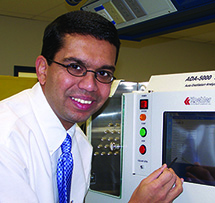
Raj Shah
Collaboration often drives innovation, says petroleum industry veteran Raj Shah, Ph.D. He notes that much of the work of his committee on petroleum products, liquid fuels, and lubricants (D02) results from interactions among experts from across the petroleum industry. Because of this, says Shah, “I've had the opportunity to work with experts from all different parts of the petroleum industry, whether they work in fuels, lubricants, or greases, and the friendships I've made at ASTM have really helped me in my career.”
Shah currently serves as a director with Koehler Instrument Company, which specializes in petroleum testing instruments. He has been a highly involved ASTM International member for over 25 years and has been vice chair of the subcommittee on lubricating grease (D02.G) for over a decade, as well as holding leadership positions in several other D02 subcommittees. He is also active on the subcommittee on oxidation (D02.09) and various other subcommittees under D02. Shah has received the Award of Excellence for his service to the D02 committee three times. In addition, he was honored with the Eagle Award for his service to the committee in 2014.
Shah is particularly proud of his idea to teach hands-on education courses to ASTM members in the petroleum industry. “The goal of the course was that in the morning sessions, they would be taught by experts in the field, and in the afternoon, there would be hands-on practical training,” he says. Over the past three years, the hands-on course on gasoline has evolved into a general fuel technology course, and the industry response has been enthusiastic.
Shah has collaborated on writing and editing numerous books and publications, most notably co-editing the Fuels and Lubricants Handbook: Technology, Properties, Performance, and Testing, Second Edition, which is now known as a comprehensive must-read in the industry. “Sometimes an oil chemist, a petroleum engineer or scientist, or a college professor needs a one-stop reference for information on all things related to fuels, greases, asphalts, and lubricants, and this is where they should start,” says Shah.
When asked about how he maintains such a high level of involvement with ASTM, Shah says, “I have been very fortunate to work at Koehler Instrument Company, where management has always encouraged active participation in ASTM. I get a lot out of what I put in at ASTM, which has been extremely valuable for my growth as a person and for my company as well. I owe ASTM, its staff, and all the colleagues from various industries that I have made connections with, a great deal of gratitude.”
Building Standards: Contributing and Leading
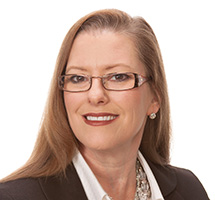
Julia Schimmelpenningh
In 1992, Julia Schimmelpenningh became a member of the committee on security systems and equipment (F12). “It took some getting used to, but the process and inclusion of ASTM quickly became addictive,” she says. “Standards development can seem very complex and intimidating at first, but once you recognize that no one knows everything and everyone can contribute, it does become less daunting.”
That was just the beginning for Schimmelpenningh, who is the global architectural applications manager at Eastman Chemical. She went on to become chair of F12, and she currently serves as chair of the committee on performance of buildings (E06). Of this role, she says, “It’s quite simply amazing. As chair of F12 and then later E06, my eyes — and ears — were blown away by so many products, methods, and strategies. They have created an experience I feel blessed to have been given.”
She received the Award of Merit in 2016 and the Outgoing Chair Award in 2018 for her service to F12. In 2011, she received the Award of Appreciation for her service to E06 and received the service award in 2019. And she has been nominated as a director on the ASTM board (see page 63).
Schimmelpenningh explains that statistics show that we spend 90% of our time indoors, which is why “The stability, durability, and performance of products and components used to construct, protect, and maintain a building become critical to life safety, comfort, and environmental impact.” The various standards she works on build confidence for building industry professionals and also building occupants; they help make day-to-day life safer.
“The best standards in the world can be out there, but if they are not able to be used, they are worthless,” says Schimmelpenningh. “From this development and evolution grew the understanding that both industry and users need to be in consensus to create a document that contributes to well-being.”
Quality and Statistics
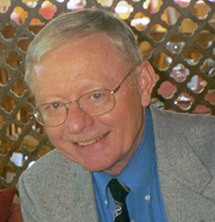
Tom Murphy
They say the game of bridge is difficult to learn but even harder to master — and even if mastered, will still present new challenges. It is not uncommon for mathematicians to excel at this game, which requires comprehensive logical analysis. As a statistician who is always up for a challenge, it should come as no surprise that bridge is one of Tom Murphy’s favorite pastimes.
Murphy has been involved with ASTM International since 1980. He has supported the Interlaboratory Study Program, which aids committees as they develop precision statements supported by high-quality laboratory data. He also gives courses to ASTM staff on the statistical aspects of the program. And he has also worked extensively on terminology for the committee on quality and statistics (E11), guiding the redirection of the role of the terminology subcommittee and giving each separate subcommittee the ability to define their own terms.
Murphy has served as secretary, vice chair, and then chair of the quality and statistics committee. He has been adamant about the need for officers to serve shorter terms so more members can become involved. He believes this creates more involvement, which ultimately leads to new standards.
Murphy has worked on numerous standards, including these that stand out for him: the practice for use of control charts in statistical process control (E2587) and the practice for conducting equivalence testing in laboratory applications (E2935), both of which he began.
When asked about the highlight of his time with ASTM, Murphy says that working on the standards themselves has been the most enjoyable and rewarding aspect, as well as collaborating with other members. “I really believe the best job on an ASTM International committee is to be a subcommittee chair because that is where the standard work is done. It's very important that committees continue to keep their standards current and also come out with new standards,” he says.
Murphy has been recognized several times by ASTM, with the Award of Merit in 1997, the Frank W. Reinhardt Award in 2008, and the Harold F. Dodge Award 2010.
An Advocate for Safer Consumer Products
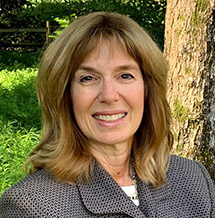
Carol Pollack-Nelson, Ph.D.
New consumer products are always coming to market, and there is a continuous need for new or improved standards to ensure consumer safety. That’s why Carol Pollack-Nelson, Ph.D. continues to be very involved in the work of the committee on consumer products (F15). She advocates for quality and safety standards for consumer products because she believes it is the right thing to do.
Owner of Independent Safety Consulting LLC, Pollack-Nelson is a human factors psychologist who specializes in consumer product safety. Prior to this, she was a senior engineering psychologist with the U.S. Consumer Product Safety Commission (CPSC). She has been an ASTM International member for 28 years and currently serves on the ASTM board of directors.
Chair of the subcommittees on liquid laundry packets (F15.71) and weighted products (F15.74), Pollack-Nelson is vice chair of new projects for the executive committee (F19.90) and a member of numerous other F15 subcommittees.
“Every time I work with a committee, I learn from people who are on the committee,” she says. “The way we are able to come together to develop a standard that enhances safety is very rewarding.”
Relationships and Standards for Antimicrobial Agents
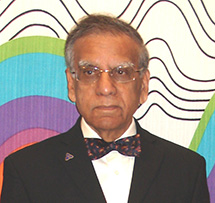
Syed Sattar, Ph.D.
Standards work is about more than collaborating and sharing technical expertise. It’s about the relationships that members form in the process. When asked about his time with ASTM International overall, Syed Sattar, Ph.D. says, “Subcommittee E35.15 on antimicrobial agents has become my extended family, with several of the ‘regulars’ becoming my good friends.” He notes that a close second is being recognized with the Award of Merit in 2017.
Co-founder of CREM Co. and a professor emeritus of microbiology at the University of Ottawa, Ontario, Canada, Sattar has been an ASTM International member for over 25 years. He works on the committee on pesticides, antimicrobials, and alternative control agents (E35) and has introduced six new standards to the subcommittee on antimicrobial agents (E35.15). He actively contributes to the review and update of various standards, particularly those pertaining to viruses.
While he takes pride in all the methods he has worked on, one stands out for him: his work on the quantitative disk carrier test method for determining bactericidal, virucidal, fungicidal, mycobactericidal, and sporicidal activities of chemicals (E2197). This standard is referenced by regulatory agencies such as Health Canada and the U.S. Environmental Protection Agency (EPA). Along with this, it was selected by the Organization for Economic Cooperation and Development (OECD) as a potential candidate for use by its 30+ member countries worldwide.
Sattar and his colleagues have recently proposed a new standard that will support the assessment of technologies for microbial decontamination of indoor air. “Our method is particularly relevant to validate the claims of the increasing numbers of technologies against pathogens such as coronaviruses and the cause of tuberculosis,” says Sattar. “Once this method is approved, it will ultimately bridge the gap in our ability to assess methods for indoor air decontamination.”
“The work of Subcommittee E35.15 and that of others in ASTM are becoming increasingly relevant with time as we confront emerging and reemerging pathogens,” says Sattar. “The current pandemic of COVID-19 is a case in point.” For these reasons, he particularly encourages young academics to get involved in standards work so there are always new ideas underway.
Shannon Vennie served as the 2020 summer communications intern at ASTM International.
 SN Home
SN Home Archive
Archive Advertisers
Advertisers Masthead
Masthead RateCard
RateCard Subscribe
Subscribe Email Editor
Email Editor